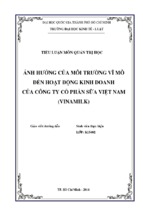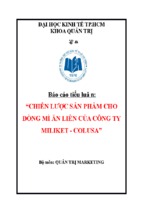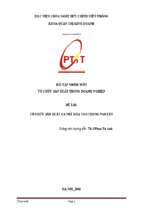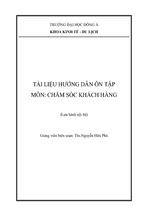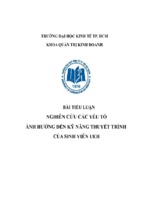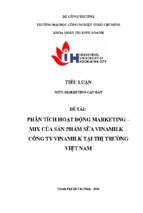94
BUILDING SUCCESSFUL ONLINE COMMUNITIES
with updates on how money was spent and results of the relief effort, kept donors involved and engaged. The results of the Hurricane Charley relief effort dwarfed the
several thousand dollars raised the previous year in response to Hurricane Isabel. It is
believed that ongoing efforts to develop personalized communications with donors
will continue to improve results in the future.
Community Mobilization: What Now? Calls to Action
and Increased Participation
Converting an engaged constituency into a mobilized constituency is perhaps the most
challenging aspect of the community building process. At this stage of development,
an organization
Has convinced unaffiliated individuals to join (indicating an initial interest in the
community value proposition)
Has established a trusted connection with a constituent through personalized
two-way communications
Now the challenge is to stimulate participation in a sequence of supportive actions
along an involvement path. E-mail communications should direct supporters back to
Web site tools that allow for participation in actions relevant to an individual’s profile, with specific actions varying for different organizations. Politically active groups
often use Web-based petitions and advocacy campaigns to enable their supporters to
easily participate in the public policy process. Shared-value groups often use listservs
or blogs to enable members to contribute their opinions to an ongoing community
conversation. Charitable organizations typically focus on facilitating donations.
Among your membership base exist ardent supporters willing to commit multiple
hours per week (or per day) to your cause. There are others who may scan personal
e-mail only on the weekends, but may provide intelligent feedback in a regular manner.
Large numbers may open e-mails, but may never actively participate in your calls to
action. Tracking these different segments of your membership and tailoring your interactions accordingly is essential to effective community building.
Once an action (or a series of actions) has been initiated, make certain to solicit
ideas and respond to feedback. The best way to find out what is interesting to constituents is to ask. Solicit preference information from individuals as they opt-in to
your newsletters, give money, complete a survey, or network using your tools. In addition to information supplied by members, pay close attention to behavioral activity
as measured by page views, click-through rates, participation rates, and other easily
measured characteristics. Combine these statistics with demographics and preferences
to build a complete profile of each member and your constituent segments. Constantly
look for opportunities to better understand your membership and their motivations
for action.
Structure your action offers so that they proceed along an involvement path, allowing for initial, low-barrier to participation actions that lead to the next step up in
engagement.
As an example, CARE USA, one of the largest international relief organizations,
uses a sophisticated subscription management page (see Exhibit 7.8) allowing community members to supply updated profile information, view activity records and edit
newsletter preferences.
95
Strategies for Building Community
EXHIBIT 7.8
Community Profile: CARE USA
Activity Optimization: Finding the Right Jobs for
the Right Supporters
These people who link us up with the world . . . who introduce us to our
social circles—these people on whom we rely more heavily than we realize—
are Connectors, people with a special gift for bringing the world together.
—Malcolm Gladwell, The Tipping Point
Malcolm Gladwell’s frequently cited work on social networking and community building, The Tipping Point, refers to distinct types of individuals involved in creating
social trends. He uses terms like connectors, mavens, and salesmen to describe the individuals who take on unique roles in marketing an idea and encouraging the adoption of new behaviors that become social trends. Individuals with these skills exist
within the community surrounding your organization. The key to optimizing the value
of your membership is to ensure that these people have access to tools that help them
be effective in their roles. Ideally, you want the activities that are most supportive of
your organizational mission to become the next social trend.
The challenge is to mobilize supporters to use their social networks for the benefit
of your organization. In essence, an organization needs to convert a portion of its
96
BUILDING SUCCESSFUL ONLINE COMMUNITIES
engaged base into active recruiters and organizers, thereby significantly expanding the
reach and impact of its own personnel. Many organizations have already experienced
the importance of social networking online as a result of their use of “tell-a-friend”
tools. These networking tools have demonstrated that if you provide supporters with
an easy way to help spread the word about your organization’s activities, many will
reach out to their social network and encourage participation.
More sophisticated social networking tools allow supporters to build personal
Web pages to communicate their involvement with an organization to their friends
and colleagues, and recruit new members or solicit other supportive actions on behalf of an organization.
For example, within hours of President Bush’s February 24, 2004, announcement
of his intent to seek a constitutional amendment prohibiting same-sex marriage, The
Human Rights Campaign (HRC) had mobilized an online community nearly 350,000
strong (see Exhibit 7.9). Having built this community through tireless effort, count-
“With this endorsement, President Bush struck a cruel blow against equality
and liberty in our country; he escalated the fight for marriage equality to a
dangerous and divisive new level. Now it’s your turn to make history.”
—Cheryl Jacques, President, Human Rights Campaign
(from e-mail appeal—02/24/04)
EXHIBIT 7.9
Community Profile: Human Rights Campaign
Strategies for Building Community
97
less e-mail campaigns, advocacy efforts, petition drives, and correspondence, the HRC
staff had an engaged and mobilized constituency ready to act. In a series of e-mail
appeals, HRC offered members a variety of ways to support the organizations and its
mission. Fundraising was a key element of the campaign, and an ambitious goal of
$500,000 within the week was set and surpassed. Advocacy campaigns allowed members to send letters to Congress and the president voicing their opposition. HRC gave
activists the ability to build their own pages on behalf of the organization, to tell their
stories, post pictures, and to engage their friends and families. By having a community ready to act and by giving them the mechanisms to reach out in their own, individual way, HRC produced a stunningly successful campaign.
The downside of optimizing member activity is that content may need to be carefully monitored. The same tools that give activists an unprecedented ability to voice
their opinion and contribute to your cause can often be accessed by those with opposing viewpoints or those simply seeking to post inappropriate content. Organizations
must strike a careful balance between giving members the autonomy to develop content, with the desire (and often the legal necessity) of ensuring that content is both
appropriate and contributing to the mission of the organization.
Community Integration: Connecting Communities
across Your Organization
Online communities can complement the networks that your organization already possesses as a result of your offline constituency development activities. Depending on
your organizational mission, you may have cultivated networks of donors, event attendees, volunteers, coalition partners, and so on. Internet-based relationship management and communication tools provide a cost-effective means for managing your
offline communities, as well as new opportunities for connecting and optimizing these
existing networks. As organizations begin to successfully mobilize online communities, the opportunity to leverage these relationships to support offline activities will
quickly become apparent (see Exhibit 7.10). Successful organizations will assimilate
the ideas of community building into everything they do, connecting various constituencies into an integrated community network.
Establishing connections between the different communities that support your organization presents both challenges and opportunities. While many charities possess
engaged constituencies, they may not have a management culture that welcomes extensive community participation in the decision-making process.
Traditional forms of broadcast publication are now being challenged by a variety
of Web-based, interactive communication strategies (e.g., blogs or discussion forums)
that allow constituents to weigh in on virtually any aspect of organizational policy.
Unless an organization develops an openness to these new forms of participation, it
risks discouraging the development of supportive communities.
The opportunities available from integrating community-building considerations
into an organization’s operations are compelling. Offline constituents can be more effectively managed online, increasing the support they can provide. Online supporters
constitute an already-engaged audience of potential participants in real-world activities that are important to a nonprofit, whether the request involves financial support,
physical participation in activities, and so on. When an organization pursues consistent messaging both offline and online, based on an integrated view of constituent
98
EXHIBIT 7.10
BUILDING SUCCESSFUL ONLINE COMMUNITIES
Community Profile: Environmental Defense and Planned Parenthood
Strategies for Building Community
99
activities, they can be more effectively converted into life-long supporters. Connecting
communities is the key to success.
ABOUT THE AUTHOR
As the CEO and co-founder of GetActive Software, Sheeraz Haji, ePMT, has
driven the company to become the leading provider of member relationship management software for membership organizations. His management of GetActive’s organizational and development efforts has resulted in the acquisition of
over 300 clients and the achievement of profitability in 2002 and 2003. Sheeraz
is an active member of the board of directors for Nonprofit Technology Enterprise Network (N-TEN), an associate for Independent Sector, and a trustee of the
ePhilanthropy Foundation. Sheeraz has been selected as an expert presenter at
multiple industry events sponsored by numerous organizations, including NTEN, Independent Sector, PBS, NPR, National Council for Nonprofit Associations, and Association of Fundraising Professionals. Before GetActive, Sheeraz led
a product management team at Digital Impact, the leading provider of online direct marketing solutions for enterprises. He has also worked as a strategy consultant for McKinsey & Company, where he served both nonprofit and for-profit
organizations and focused on corporate strategy, market entry, and operational
effectiveness. Sheeraz has a BS from Brown University and a MS from Stanford
University. You can e-mail Sheeraz at
[email protected].
As Vice President of Corporate Development at GetActive Software, Greg Neichin has helped shape a variety of new practice areas for the company and has
worked closely with some of the country’s largest political campaigns, advocacy
groups, and educational institutions. Prior to joining GetActive, Greg led a
broad range of partner and corporate initiatives for Redback Networks as a
member of the Strategy and Business Development team. He has written and lectured on behalf of the Stanford Research Institute’s Business Intelligence program throughout North America and Asia. He began his career as a Consultant
for Mercer Management Consulting where he worked for a number of Fortune
500 clients. Greg holds a B.A. in Economics and Government from Dartmouth
College. You can e-mail Greg at
[email protected].
CHAPTER
8
Building Your Brand Online
Jason Mogus, ePMT
President, Communicopia.net
Pattie LaCroix, ePMT
Vice President, Communicopia.net
Even if you don’t think you have a brand as a non-profit organization, you
actually do!
he promise of a brand is the idea that it can be trusted and will make your life better. Everyone from banks to your sneaker to your morning orange juice maker want
to develop a long-term relationship with you. Brands promise you value. They work
to develop an impression that will lodge so powerfully in your mind that you unconsciously turn to them, engage in their story, and adopt the set of values upon which
pivots their relationship with you. Building a long-term relationship is the goal of all
brands. Put simply, a brand is an organization’s story. It promises value to you for the
purpose of building a relationship.
Because people can interact with your organization online, nonprofits have
tremendous potential to create relationships that will sustain your work. The key to
building this relationship is an emotional engagement with your audience. In order
to mobilize the audience into becoming involved as either a donor, a volunteer or member, a nonprofit must first understand that the audience they are trying to reach and
engage receives many hundred messages a day asking them in one way or another to
buy into a relationship. This is because building relationships that deliver value is the
very lifeblood that pumps through the heart of the branding exercise.
Virtually all keepers of brands have recognized the power that the Internet holds
in building relationships with their different audiences. It is a noisy landscape to be
sure, but nonprofit organizations have a story to tell that sets them apart from consumer-product–driven brands. (i.e. Ivory Snow, Levis, and Ford). Consumer-driven
brands must create a story that has some value to you for the sole purpose of building a relationship that is predicated on you purchasing their product. Nonprofits, by
contrast, have embedded in their very culture, articulated with their mission statements, and delivered through their programs, brands that are saturated with values
that can serve to build relationships that are instead based on you as a member of
T
100
The Basic Branding Building Blocks
101
your community—not just as a consumer. In short, product-driven brands focus far
more on individual needs while nonprofit or cause-related brands focus far more on
the needs of the community. The value-based brands that are held by nonprofits resonate closely with the very core of branding, and as such, the nonprofit sector is incredibly well positioned to use the power of branding to its advantage.
We hear a lot about branding these days. It seems like all products, services, and
even people—everyone from sports figures to politicians to industry leaders are conscious of developing their own personal brand. It is key to remember that branding is
about creating a relationship of trust and emotional attachment. Even if you don’t
think you have a brand as a nonprofit organization, you actually do! When you are
out in the community, delivering services, working with volunteers and raising support, you are constantly creating an impression of your nonprofit. This impression
is associated with a certain value set within the minds of your audience. Values, trust,
relationships, benefits, and promises are all associated experiences of your brand.
Whether you are deliberate about your brand or not, you are by the very fact of engaging with the community creating a brand for your organization and that brand
comes across in everything you do.
It seems natural to explore the possibility that thoughtful branding offline and
online of nonprofits holds immense potential in building authentic trusting relationships and emotional attachment with audiences. Before we delve into what edge, if any,
the nature of branding gives nonprofits in jostling for brand space in the public’s mind,
let’s take a look at the basics of branding and the impact that online branding in particular has on building relationships.
THE BASIC BRANDING BUILDING BLOCKS
There has been a great deal written about the power of branding and its goal to very
deliberately and consciously create a presence, an image, or a memory in our unconscious. This brand positioning within our psyches plays a key factor in our decisionmaking process. When we reach for a Diet Coke and snack of Lays potato chips we are
not randomly choosing these options, we are responding in large part to their “brand
promise,” which has been lodged somewhere in our mind. The story of these brands
focuses on creating and then addressing our individual needs, wants, and desires:
Diet Coke–Do What Feels Good
Lays Potato Chips–Bet You Can’t Just Eat One
A brand is one of an organization’s or a company’s greatest assets. Your brand
is what people think of you, what they attribute to you, and their expectations of you—
essentially, it is your reputation. When managed well, it holds the potential to successfully support your organization and create new opportunities for engagement.
Managing your brand, then, needs to rest at the very center of your organization and
be integrated into your delivery of services. The story that your organization sends out
to the public and the values upon which these messages rest should be key drivers of
the strategy and the culture of your nonprofit. Brands for nonprofits are value-based
and at the heart of such brands are organic relationships that require nurturing to
102
BUILDING YOUR BRAND ONLINE
grow and to sustain an organization. Value-based brands rotate on the experience of
the relationship.
This is where the Internet has a particularly powerful role to play in value-based
nonprofit brands. The Web is all about people interacting with your organization.
Moving your brand online is moving beyond images, tag lines, and graphics and into
the space of experiencing of your brand. This is where the greatest challenge is for nonprofits and the greatest opportunity as well.
Brands have both tangible and intangible attributes. We are all most familiar with
a brand’s tangible characteristics. An organization’s slogan, colors, or logo are tangible brand reference points. But these tangible attributes of a brand are merely the
visible byproducts of its intangible elements—the values, personality, and functional
benefits it promises. Delivering on these intangible aspects of your brand means that
you are fulfilling your brand promise. Combined, the attributes of a brand help create
a market position by differentiating it from the other brands within any given market
segment.
It is not unusual for product-driven brands to differentiate them by comparing
themselves with their competition. This is not a branding strategy that should be played
out within the nonprofit sector; here, differentiation needs to be communicated
through a meaningful, attractive, and compelling manner. This is because your valuesbased brand needs to rest on your own set of values and benefits that are unique to
you and that will engage individuals to support your work in the community.
The values of a brand are the values that you want your target audiences to associate with you when they think about you. These values necessarily are aligned with
your mission statement. The benefits of your brand need to clarify for your target
group what exactly is the benefit of supporting your brand and how will this engagement with your brand make your audience feel. By delivering on your brand promise
you create differentiation for your organization within the minds of your target audience (see Exhibit 8.1).
TAKING YOUR BRAND ONLINE
The vitality and strength of any brand is its ability to engage people, to tell its story
in a consistent and compelling manner in a fashion that clearly articulates the benefit
for the audience. Nonprofits do, in fact, have engaging stories to tell that are of great
benefit to both individuals and the community, the best part is these stories do not have
to be manufactured—they are authentically present in the very genetic code of nonprofit organizations. So why aren’t people lining up to volunteer or donate for nonprofits? Why aren’t nonprofits overwhelmed by public support?
Simply stated, there are three broad reasons. To begin with, nonprofits traditionally have not viewed branding as an integral or even important element of their operations or strategic direction. Secondly, nonprofits do not have large marketing budgets
and human resources at their disposal to create and implement effective brand strategies. Donors and funders do not generally support such communication initiatives.
Finally, because of the first two reasons cited, nonprofits have not actively engaged
with the most powerful communications tool available today, the Internet. In general,
the Web has been vastly underutilized to grow the brands of nonprofits and to increase their base of support. What this means is that there is enormous potential for
103
Taking Your Brand Online
BRAND BENEFITS
(What does this help
me do and how does
it make me feel?)
BRAND VALUES
(Values communicated
to target audience)
BRAND PERSONALITY
(Tone of your messaging, communicated characteristics)
YOUR
BRAND
(Delivers on
your brand
promise)
EXHIBIT 8.1
Basic Brand Building Blocks
nonprofits to engage the public in their work, to broaden their base of support and
ultimately deliver greater impact within their communities.
When taking your nonprofit brand online, you will mostly likely be seeking to
increase your support base and/or enlist volunteers in your organization. Before you do
this, take a few moments to review the ePhilanthropy Code of Ethical Online Philanthropic Practices (see Appendix A). When you take your brand online, you are expanding your potential to service relationships and build new ones. Successful
relationships are built on trust. When gathering data about your online audience, it
is imperative that this data be used for clearly expressed and stated purposes only,
that all communication be permission based, and that your online audience’s security
and privacy are at all times protected. These basic principles should be at the center
of any online branding exercise.
Branding your organization online means that your audience has the opportunity
to experience your story and interact with your brand promise. This experience is of
paramount importance and will, in fact, determine in the mind of the end user whether
or not your organization’s story is credible and memorable—two key elements of any
relationship building activity. So it is fundamental that your branding online be consistent with your offline branding. Your branding strategy will be most powerful when
it is integrated with your offline initiatives. If developing a branding strategy seems
very much like developing a strategic vision for your nonprofit that is good, both must
be inextricably linked because this will create genuine relationships with your audience.
When you develop your branding strategy, you need to explore the following questions




